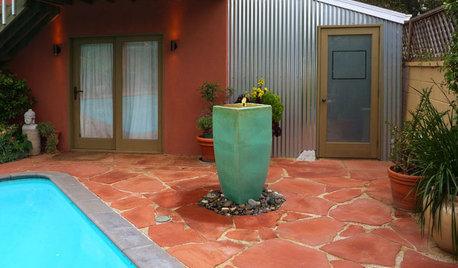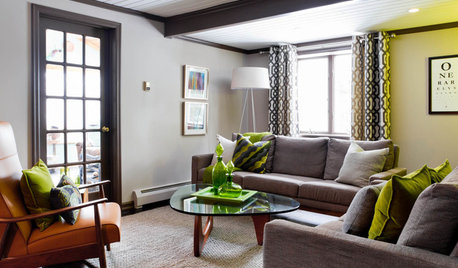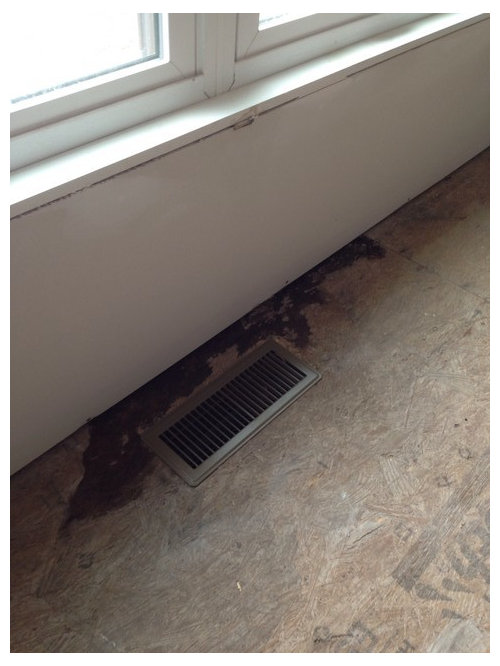Please Help Leak Under Window
sirraf69
9 years ago
Related Stories

HOME OFFICESQuiet, Please! How to Cut Noise Pollution at Home
Leaf blowers, trucks or noisy neighbors driving you berserk? These sound-reduction strategies can help you hush things up
Full Story
SMALL SPACESDownsizing Help: Storage Solutions for Small Spaces
Look under, over and inside to find places for everything you need to keep
Full Story
BATHROOM WORKBOOKStandard Fixture Dimensions and Measurements for a Primary Bath
Create a luxe bathroom that functions well with these key measurements and layout tips
Full Story
SELLING YOUR HOUSE10 Low-Cost Tweaks to Help Your Home Sell
Put these inexpensive but invaluable fixes on your to-do list before you put your home on the market
Full Story
SELLING YOUR HOUSE10 Tricks to Help Your Bathroom Sell Your House
As with the kitchen, the bathroom is always a high priority for home buyers. Here’s how to showcase your bathroom so it looks its best
Full Story
SELLING YOUR HOUSEHelp for Selling Your Home Faster — and Maybe for More
Prep your home properly before you put it on the market. Learn what tasks are worth the money and the best pros for the jobs
Full Story
REMODELING GUIDESWisdom to Help Your Relationship Survive a Remodel
Spend less time patching up partnerships and more time spackling and sanding with this insight from a Houzz remodeling survey
Full Story
HOUSEPLANTSMother-in-Law's Tongue: Surprisingly Easy to Please
This low-maintenance, high-impact houseplant fits in with any design and can clear the air, too
Full Story
BEFORE AND AFTERSMore Room, Please: 5 Spectacularly Converted Garages
Design — and the desire for more space — turns humble garages into gracious living rooms
Full Story
LIVING ROOMSCurtains, Please: See Our Contest Winner's Finished Dream Living Room
Check out the gorgeously designed and furnished new space now that the paint is dry and all the pieces are in place
Full Story





tibbrix
sirraf69Original Author
Related Professionals
Royal Palm Beach Architects & Building Designers · Winchester Architects & Building Designers · Nanticoke Architects & Building Designers · Oak Hills Design-Build Firms · East Riverdale General Contractors · El Monte General Contractors · Flint General Contractors · Fort Lee General Contractors · Hampton General Contractors · Mashpee General Contractors · Mount Laurel General Contractors · Parkville General Contractors · Perrysburg General Contractors · Pico Rivera General Contractors · Vincennes General Contractorsenergy_rater_la
sirraf69Original Author
robin0919
rollie
rollie
Joseph Corlett, LLC
Joseph Corlett, LLC
sirraf69Original Author
live_wire_oak
energy_rater_la
klem1
jdez
sirraf69Original Author
worthy
renovator8
sirraf69Original Author
worthy
sirraf69Original Author
robin0919
sirraf69Original Author
sirraf69Original Author
renovator8
worthy
sirraf69Original Author
millworkman
worthy
Joseph Corlett, LLC
sirraf69Original Author
Joseph Corlett, LLC
millworkman
worthy
renovator8
worthy
sirraf69Original Author
avossohouse
sirraf69Original Author
worthy
BrianKnight
robin0919
sirraf69Original Author
robin0919
sirraf69Original Author
millworkman
sirraf69Original Author